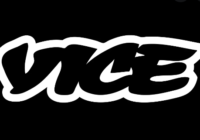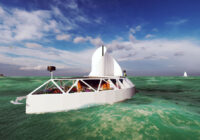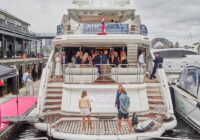GMBA Finland’s Jouko Huju talks to Anders Kurtén, CEO of Baltic yachts about the importance of sustainability
Baltic Yachts of Finland is a market leader in sustainable super yachts. For Baltic Yachts sustainability is not just verbiage. It means thorough and complicated research and knowledge about rapidly changing customer requirements. And profound concern about the environment.
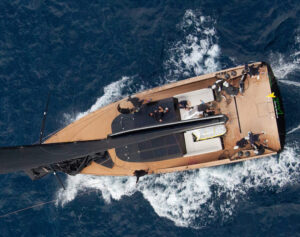
JH: How would you describe the business you are in?
AK: Our industry, and us, we are in the difficult business of delivering dreams.
These dreams they vary in size, form and investment. Yet the sea is the same for all, whether experiencing it from a kayak or a superyacht.
For us a superyacht is a product that exists for one main reason. That reason is to put a smile on the face of the owner. Every boat, or yacht represents freedom. Freedom from speed limits and various land-based restrictions.
But not everybody’s idea of freedom is a superyacht. In my country, Finland, the dream boat is a small aluminum outboard powerboat. And by the way, Finland has the highest boat density in the world. Every 5th Finn owns a boat.
JH: Let’s talk about Baltic Yachts and sustainability first in terms of history!
AK: To truly understand our approach to sustainability we need to go to way back in history. For hundreds of years, we in Finland have built ships mainly for export markets. It all started from frigates in the 16th century. This heritage meant that we had the boatbuilding skills passed on through generations. Much later, in 1973 a few young men relit the torch and started building sailing boats again. And they had a particular philosophy in mind. The boats needed to be lighter, stiffer and faster.
In 50 years, Baltic Yachts has evolved from a humble local boatbuilder to become a leading global builder of sustainable superyachts. Globally, superyacht dreams are changing shape. Sustainability has become paramount.
The fundamental idea and decades of experience with light construction gave Baltic Yachts the basics to create sustainable superyachts as a lighter boat need less energy to move. Today I can subsequently claim, that we are world leaders in sustainable advanced custom carbon composite superyachts.
Our philosophy too has evolved. We still build lighter, stiffer and faster yachts. We have added one dimension though. The boats are also greener. Together with our customers we have been able to create sustainable solutions. Sustainability for us is managing and myopically focusing on multiple small details all combined creating a big impact.
JH: Could you explain in basic terms the sustainability principles at Baltic Yachts?
AK: Our customers represent 0,003% of the global population but as they control 13% of global assets, their actions matter, also in terms of leading the way as these customers in many cases are thought leaders in their own right.
For sustainability there is no single silver bullet. There are no simple solutions to complex problems, despite what politicians may tell you. Sustainability for us broadly falls into three categories;
one – reduce the environmental footprint of our production – and use more organic materials
two – minimize the total lifecycle emissions of our products while under way
three – reduce the total lifecycle emissions of our products when at standstill
Reducing the environmental footprint of production is a continuous challenge. The key here is to measure your impact. Baltic Yachts has been measuring sustainability impacts since 2014. Over the last 5 years we have finally got the hang of it. We now track 30 parameters and convert them to CO 2 equivalents annually. In 2018 we had 1400 metric tons of CO2 equivalents. By 2020 we had reduced this to 400.
This represents a 2/3 reduction in build time environmental footprint and all this without any significant investments. Organic materials further reduce the environmental load. Let’s take a few examples:
- Cork replaces teak in decking
- Flax replaces carbon fibre in hull and structures – like on our recently launched 68 Café Racer where we have 50% flax in hull, deck and structures
The quantum leap, however, is yet to come. We are researching recycled carbon fibre which I predict will be a game changer.
What really matters though, given the longevity of our products, are lifecycle emissions.
I would again give two examples where we are market leaders;
Both Baltic 142 (S/Y Canova) and Baltic 117 (S/Y Perseverance) feature electric propulsion with hydrogeneration. Both can cross the Atlantic without burning a single drop of fossil fuel, thus saving hundreds of litres of diesel over a single crossing. This means several cubic meters of fossil fuel saved over a typical full season. Hydrogeneration makes minimal emissions under sail possible. The freewheeling propulsion drive unit is used for generating power to the battery bank.
On S/Y Canova and S/Y Perseverance 14 knots of speed means 15-20kW of generated power making both yachts self- sufficient while sailing. There are other benefits to electric propulsion as well.
Namely silence: S/Y Perseverance features 42 dB in the owner’s cabin.
Motoring under full throttle: batteries also give us 8- 10 hours of silent period at night. An electrical main engine also gives us much more volume inside the boat in premium social areas as the engine room typically is much smaller on a hybrid yacht. Where we still have work to do is in reducing emissions while at standstill.
On a recent launch, 60 sqm of solar panels allow a couple of hours of time off for generators on a sunny day. The advice here is to sail more, spend less time in ports. Well, drinking cold champagne in port is nice, so we need to work harder as an industry on reducing standstill emissions.
The fact of customers demanding sustainable solutions remains and the technologies are available. For once the morally right thing to do is also best for your business and future market shares.
For Baltic Yachts lifespan means a lot. The first ever built Baltic, the 46 foot S/Y Queen Anne, from 1974, returned to our yard for her first ever refit. For us the future is bright green.
Dr Jouko Huju
Jouko has worked all his career in export promotion and international trade, both in private and public sectors. He served at FINNBOAT (Finnish Marine Industries Federation) for over 20 years in various capacities including that of CEO and later, as Chairman.
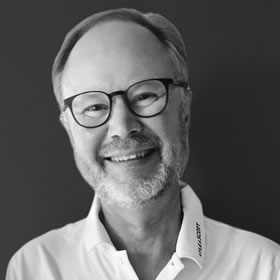
His passion for industry development, exports and international relations led him to ICOMIA (International Council of Marine Industry Associations) where he was a board member for 14 years. He was actively involved in the establishment of European Boating Industry (EBI) and the KV- Foorum, a public- private partnership to foster dialogue and promote cooperation in the export sector. He has served as Board member and Chairman of numerous organisations including, but not limited to ICOMIA, IMCI, FINNBOAT and KV-Foorum.
He believes in both work-based-learning and lifelong-learning, completing an English MBA program and straight after that also a DrBA program. After 6 years of studying alongside work he wrote a thesis on: “Navigating New routes to Lobbying in Brussels – A Research on European Boating Industry”
Jouko is fluent in Finnish, Swedish, English and German.
Jouko is based in Finland. Those wishing to contact Jouko can do so on +358 40 5509310 or email at
Those wishing to contact GMBA in Australia can do so through MaryAnne Edwards or call +61 412 916 036
Global Marine Business Advisors and its associated website www.gmba.blue are not registered legal entities. GMBA is a network of independent marine industry advisors.







